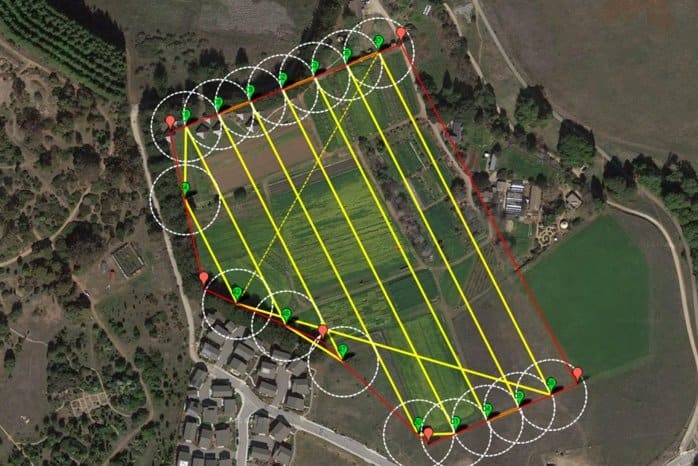
Along with the hardware and software sectors, the drone services market is the largest segment in the commercial drone industry with the strongest expansion. According to the market research report “Global Drone Service Market Analysis & Trends – Industry Forecast to 2025”, the drone services market is estimated at USD 4.4 billion in 2019 and is projected to reach USD 63.6 billion by 2025, at a CAGR of 55.9% from 2019 to 2025.
This is a huge opportunity for drone service providers. The key for capturing a share of this growing market is to offer turnkey business solutions beyond data capture, such as drone map, surveying and specialized geospatial analytics.
With more and more business relying on location data to optimize their day-to-day operations and planning or gain first-hand market insights. The drone service market grows as an effect of this increasing demand for geospatial insights.
Business and industries in need of geospatial analytics are increasingly diverse. Farmers need to know how many of their plants are underproductive. Ranchers need to know how many heads of cattle survived after a flood. Insurance companies need to know how many roofs were damaged during a storm. Electricity companies need to know how many solar panels are there in a city. Oil companies need to detect oil spills. Water companies need to know how many manhole covers are damaged or stolen. The applications and use cases are potentially endless. All of these businesses need the number and the location of each of the objects they are tracking.
Most of the drone service providers we daily speak with excel at generating photogrammetry-based drone mapping and surveying products, however, delivering geospatial insights derived from these products can be challenging and it starts to become a bottleneck.

Incorporating Picterra into a drone service business has multiple benefits, here we listed the top 7:
Firstly, not only can AI improve the accuracy of the project, but it can also reduce the time-to-delivery. The entire workload of drone map, detecting and extracting data can last up to days if being done manually. Instead, automated detection can execute faster with the power of Artificial Intelligence, shorten the delivery time from days to minutes. Furthermore, by being freed from the repetitive manual process, you use that amount of time to work on a new project or acquire new clients.
Continually, you don’t need to invest in infrastructure or R&D. GPUs and highly specialized expertise are expensive. For instance, several thousands of dollars are needed to use a high-end GPU virtual machine on cloud services. On top of which the expertise required in-house brings the expenses close to ten thousands of dollars per month. With our online platform, these are built-in components you can directly leverage on. With Picterra, you get state of the art machine learning algorithms and infrastructure without the need for extra expertise.
Maximize your ROI by using a single tool for all of your feature extraction projects. The versatility and flexibility of the object detection algorithms Picterra deploys, allows you to customize them and count objects such as trees, sheep, solar panels, shipping containers or buildings today. At the same time, you will be able to craft a detector for any other type of objects.
The AI-powered platform can detect objects faster and more efficiently than a human being. It is able to cover large areas and spot tens, hundreds or thousands of objects in the blink of an eye.
In addition to the scale at which it can operate, AI can also improve the accuracy of the detections. Even the most meticulous person is bound to make mistakes while carrying out monotonous manual detection over large scale. This is where automation helps by learning features, performing the same steps accurately every time they are executed and focusing the human expertise on challenging and rare features.
The same heavy workload being repeated with every project requires more cost and labor intensity to deliver the results in time. In contrast, once created — automated detection can be executed again and again, without additional cost at a much faster pace. By integrating AI in the process, the overall timespan can be reduced which translates directly into cost savings.
You can run AI object detection on orthophotos produced with any photogrammetry software in the market, such as Reality Capture, DroneDeploy, Agisoft Metashape, SimActive Correlator3D or Pix4Dmapper. Picterra allows you to analyze the detections, derive statistics and generate customized reports you can deliver to your clients.
You can also export the detections as georeferenced layers in various formats that are optimized to match your workflow on ArcGIS and other GIS software.
Last but not least, the Picterra platform offers you an intuitive user interface to build and run your own detectors in just a few clicks.
After the acquisition of aerial images over an urban scene, the orthomosaic has been taken on Picterra to localize and map 7 categories of objects:


Contact: Fly Dragon Drone Tech.
Email: frank at dronefromchina.com
Add: NO. 9 Dayu Road PiDu distric, ChengDu 611730, China